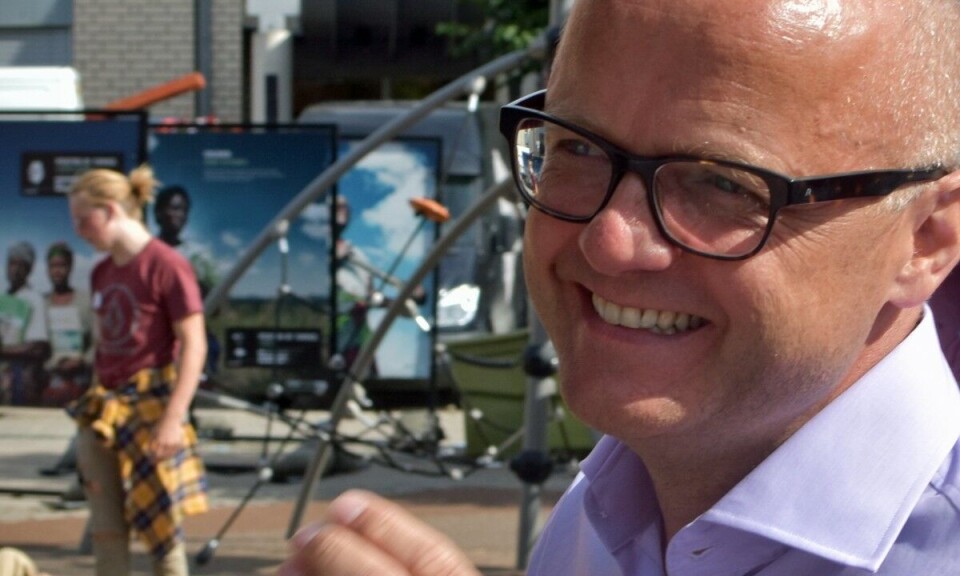
Pollution in Nikel on increase, but new technology underway
Russia’s environmental minister informs Norway about how the plant in Nikel will come up with a plan for best available technology (BAT) by 2019.
p.p1 {margin: 0.0px 0.0px 0.0px 0.0px; font: 11.0px Helvetica; color: #000000; -webkit-text-stroke: #000000}p.p2 {margin: 0.0px 0.0px 0.0px 0.0px; font: 11.0px Helvetica; color: #000000; -webkit-text-stroke: #000000; min-height: 13.0px}span.s1 {font-kerning: none}
Sergey Donskoy, Russia’s Minister of Natural Resources and Environment, had dinner with his Norwegian colleague in Oslo on Sunday. Pollution from Nikel, the long-lasting pain in bilateral environmental relations between the two countries was a natural talking point while the ministers were eating.
Minister Vidar Helgesen says to the Barents Observer that Donskoy informed him about Russia’s plans to demand best available technology (BAT) at the country’s industry.
«Kola Mining and Metallurgical Company is among the 300 most polluting companies in Russia that will be pilots for introduction of BAT. They have now been ordered to have a plan for this ready by 2019,» Vidar Helgesen says.
The Norwegian Minister of Climate and Environment tells that his ministry has been informed that emission from Zapolyarny has been reduced substantially after the new briquetting plant became operational earlier this year.
«That means that the briquets to be smelted in Nikel, located closer to Norway, will contain more sulphur. In order to reduce pollution from Nikel, it is therefor needed to do modernization, like they have announced,» Helgesen says in an e-mail.

Before the new plant became operational, parts of the sulphur in the ore was emitted as sulphur dioxide in Zapolyarny. Today, this sulphur stays in the minerals until smelted in Nikel. As a result, the total emission of suplhur dioxide from the plant in Nikel is higher today than it was before the plant in Zaployarny was rebuilt.
Emissions from Nikel is considered to be the most serious air pollution problem in northern Norway. The smelter is also identified as an environmental hot-spot by the Barents working group on environment.
«I want to underline that it is a Russian responsibility to reduce the emissions,» Vidar Helgesen says underlining that Russian authorities have to come up with requirements to the Kola Mining and Metallurgical Company to make improvements.
«From the Norwegian side, we follow up with dialogue with the company and Russian authorities. We do also follow with environmental monitoring in the border areas.»
p.p1 {margin: 0.0px 0.0px 0.0px 0.0px; font: 11.0px Helvetica; color: #000000; -webkit-text-stroke: #000000}p.p2 {margin: 0.0px 0.0px 0.0px 0.0px; font: 11.0px Helvetica; color: #000000; -webkit-text-stroke: #000000; min-height: 13.0px}span.s1 {font-kerning: none}
The Norwegian environmental minister says it for him is important that locals get reliable information.
«It is important to monitor whether the announced measures actually are implemented and give improvements. I will bring up the Nikel-case again at the meeting of the joint Norwegian-Russian environmental commission to be held in Norway next spring,» Vidar Helgesen says.
Kirkenes Mayor Rune Rafaelsen is invited to take part at the meeting. He has earlier said that his municipality is seriously worried about what happens and what consequences it will have for the people and nature in the border area.
«Norway’s biggest environmental problem is here in the border area. The factory in Nikel cause serious problems across the border,” Rafaelsen said.
















